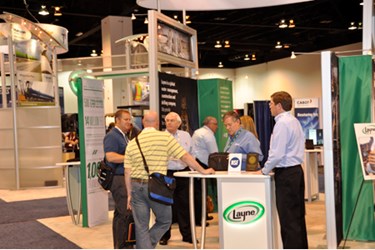River Bed Filtration

Henry Hunt, Senior Project Manager for Layne’s Ranney Collector Wells division explains the concept of river bed filtration and some of the company’s recent river bed filtration projects.
The following is an excerpt from a Q&A with Water Online Radio. Click on the Radio Player above to hear the full interview.
Water Online Radio: What are you focused on?
Henry: A lot of our groups are focused on river bank filtration. A lot of utilities are developing new supplies and are finding that they need to replace surface water supplies that may be more susceptible to contamination or pollution, with technology called river bank filtration.
River bank filtration involves using natural river bank and river bank deposits to naturally filter the surface water of a lot of its particulates and contaminants before delivering it into a distribution system, or to a water treatment plant. A lot of times this process is considered the first barrier of protection for water quality. It's natural, it's green, and it's sustainable.
Water Online Radio: Tell us a little bit more about how river bed filtration works?
Henry: You use natural river bed and river bank deposits, usually sands or sands and gravels. It works by putting in wells in the alluvial aquifer along the surface water source. By pumping the wells down, and the water down, you lower the groundwater below the river water so you reverse the hydraulic gradient.
When you reverse the gradient, you're inducing water from the surface water source to infiltrate through the river bed and river bank. In the process it's a very slow filtration and during that process you get a natural filtration of things down to a microscopic level so you're getting precipitates or particulates that are being removed such as turbidity to very low levels. Organic matter, suspended solids and even a lot of the harmful bacteria are removed through the process…
Click on the Radio Player above to hear the full interview.
